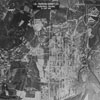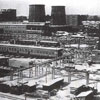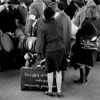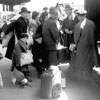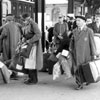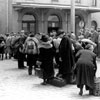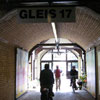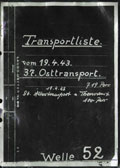Norbert Freundlich 
Auschwitz no. 116947
Norbert Freundlich was born in the village of Jastrow in Western Prussia, Germany on the 15th of July 1924. He was sent to the hachsharah (Aliyah preparation) and work camp Forsteinsatzlager Hasenfelde in Brandenburg where he was employed as a forester.
On the 19th of April 1943 Freundlich was deported on Transport no. 37 from Berlin to Auschwitz. On the 20th of April, on arrival at Auschwitz he passed the selection, received the number 116947 and became an inmate of the camp.
Freundlich was transferred to Auschwitz III - Buna-Monowitz. Camp documents record that he was hospitalized in the camp hospital at Buna-Monowitz from the 31st of May 1944 till the 24th of June 1944.
The Transport
Transport no. 37
On the 19th of April 1943, the eve of Passover and the day of the outbreak of the Warsaw Ghetto Uprising, two transports left Berlin: One containing 100 Jews was sent to Theresienstadt; the other, containing almost 700 Jews was sent to Auschwitz. Both transports were sent from Grunewald Station, platform 17.
Transport no. 37 contained 681 Jews; men, women and children, among them:
11 who had migrated to Holland and returned; 52 from Metgethen, Königsberg in Eastern Prussia; 153 from the hachsharah farm Landwerk in Neundorf by Fürstenwalde and at least 126 young people from the Forsteinsatzlagern (Hacsharah camps that specialized in forestry) in the Berlin region: Hasenfelde, Kersdorf, Kaisermühl, Jakobsdorf, Schönfelde, Wulkow, Bahlendorf and the Neumühle estate.
On arrival at Auschwitz, following the selection, 299 men received the numbers 116754 – 117052 and 158 women received the numbers 41870 – 42027 and became inmates of the camp. The remainder, 224 people, were immediately murdered in the gas chambers.
Clara Grunwald (1877-1943) was deported in the same transport. She was a Jewish teacher who taught according to the Maria Montessori Method. In 1933 Grunwald was dismissed from her job and the Montessori Method was banned. Despite this she continued to teach from home. In October 1941 she arrived at the hachsharah camp Neundorf and taught there too. Clara Grunwald was murdered in the gas chambers immediately upon her arrival at Auschwitz.
Today, a number of schools in Germany, in Berlin, Hamberg and Freiburg are named after her.
Analisa-Ora Berlinsky, a survivor of Transport no. 37 who was sent from the hachsharah camp in Neundorf describes the journey to Auschwitz in her book Zichronot (Memories):
"…the train was already standing there. Closed cattle trucks, a small window and a little straw on the floor… the doors were locked from outside and the train set out on its way… that night, in every carriage, there was someone who led the Seder – we read the Hagadah (the story of Passover) and sang the old songs and we knew that we too were living the Hagadah… with difficulty we closed our eyes… towards morning we passed Breslau… and all the time, the same question accompanied us: Would we meet again?"
The Final Train
Der letzte Zug "The Final Train" (2006, Germany), a dramatization of this transport that left Berlin on the 19th of April, was shown in July 2007 at the Jewish Film Festival in Jerusalem. The film tries to recreate the final journey of the Jews of Berlin, almost the final ones to be sent to Auschwitz.
Additional Information
The Memorial Book for the Jews of Berlin includes a record for Meta Freundlich (née Bahr), born in Jastrow on the 22nd of March 1900. It is possible that she was Norbert's mother. Meta was sent on Transport no. 31 from Berlin to Auschwitz on the 1st of March 1943. She was sent together with her husband Arthur and their children Arno, Werner and Margot.
Their fate is unknown and it appears that they did not survive.
Do you have any additional information about this person? Contact Yad Vashem.

